The Soils Project: Dr Samantha Grover
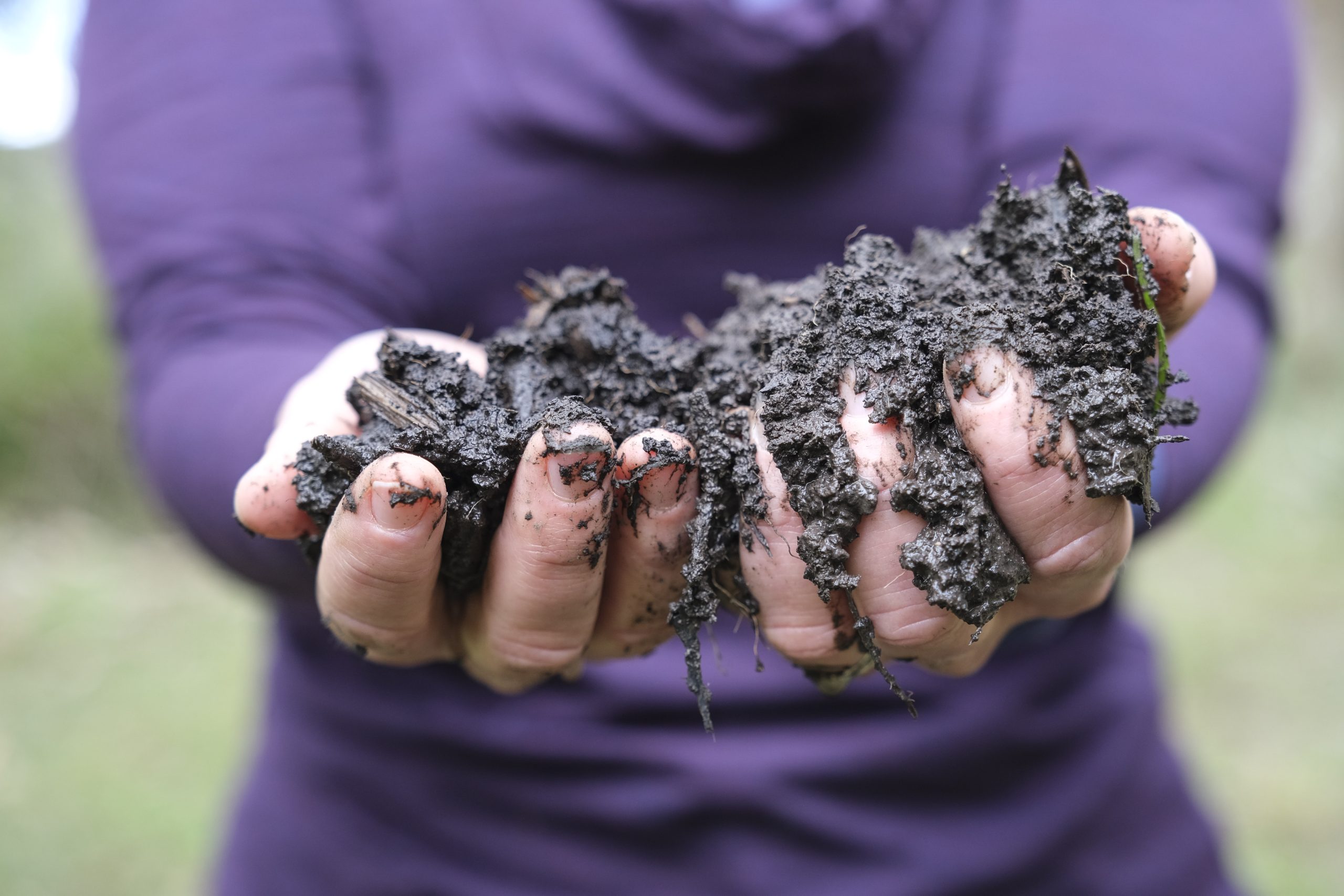
Sharing transdisciplinary soil stories
Soil scientist, Dr Samantha Grover applies the principles of physics, chemistry, and biology to address pressing socio-environmental issues such as climate change and food security. She recognises that solving our planet’s complex challenges demands collaboration across various disciplines, spanning the natural sciences, social sciences, and humanities.
An invitation to contribute, listen and learn
I love soil.
I am a soil scientist; this is not simply my job but my calling in life, like others are called to religion or art. I have been called to soil, perhaps called by soil. So when Victoria Lynn, Director of TarraWarra Museum of Art, called me about The Soils Project, I was delighted that she also recognised the importance of soil and had gathered a team of artists and curators to explore soils and colonisation together. The Soils Project weaves together three strands of my professional and personal interests and so I immediately accepted Victoria’s invitation to contribute a soil science perspective to the October 2022 workshop The Soils Project: On Country. The three strands are soils, Indonesia and First Nations Australian perspectives. Although I was originally invited as a soil scientist to share my technical and scientific knowledge of soils, my ongoing involvement in The Soils Project enables me to be a learner across disciplines and cultures.
A shared reverence for soil
The On Country workshop coincided with my first return to Indonesia after the pandemic restrictions, so, somewhat ironically, while I live and work on unceded Wurrundjeri lands, I joined On Country via zoom from Jakarta. Rather than simply share my soil science perspective with an unknown audience, I worked with the curatorial team to elicit stories of soil from the artists’ childhoods. These stories, from across cultures, countries, generations and genders, allowed us to connect through a shared reverence for soil and it’s ability to return us to significant places and people.
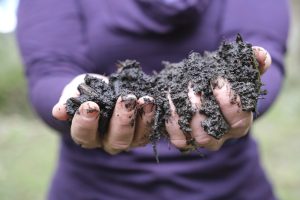
Photo: Suzanne Phoenix
Exploring soil through science, art and culture
A few months later, Victoria called again; would I be available to assist the artists with collecting soil samples from Coranderrk? Coranderrk is legendary, a significant place in Koori First Nations history, which I learnt about during my undergraduate studies with Professor Wayne Atkinson (Yorta Yorta) and Gary Foley. I was honoured and humbled to join the party, auger in hand, to learn stories of the lives at Coranderrk from Uncle Dave Wandin (Wurundjeri) and Brooke Wandin (Wurundjeri) and help with sampling the soils from these significant locations with artists Megan Cope (Quandamooka) and Keg de Souza. Across the paddocks, a long day of digging and cups of tea, we unpicked the differences and wove together the shared intentions in our science, art and cultural practices. Chromatography, auger, sample; so many words in common that still have different meanings to be explored for a successful transdisciplinary collaboration.
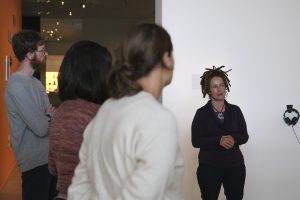
Photo: Suzanne Phoenix
The exhibition opening
August 2023: The Soils Project exhibition is being hung, mounted, painted into place on Wurundjeri country at TarraWarra and the excitement and tension in the air is palpable. With activity all around us, the Struggles for Sovereignty curatorial team and I sit still and listen deeply to stories of trauma and tragedy that inspire the work of Lian Gogali (Sulawesi) and Yurni Sadariah (East Kalimantan). They weave a tapestry of Indonesia both familiar and unfamiliar to me, with familiar stories of local people disposed from their traditional lands, environmental degradation wrought by external powers and also unfamiliar stories of religious conflict. My soil science work supporting communities and government to restore peatlands in Central Kalimantan will be all the richer for these generously shared stories. Later that same day, we revisit Coranderrk with a bigger group of artists and curators, marvelling at the origin soils and re-sharing the stories that Megan and Keg alchemied into such glorious artworks. Uncle Dave gives permission for Lian to repurpose soil left over from D Harding’s (Bidjara, Ghunglau and Garingbal) paintings and for me to repurpose soil remaining from Megan and Keg’s collection. Lian plans a live performance during the exhibition, I plan carbon analyses.
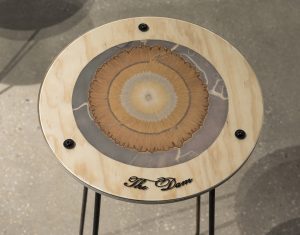
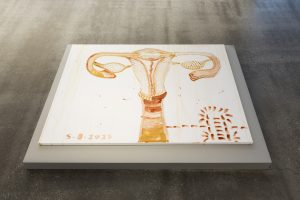
Photo: Andrew Curtis
The Soils Project has been both challenging and joyful, awkward and enlivening. I feel connected to my fellow travellers in the journey of The Soil Project’s evolution and deeply invested in it’s next steps. As I write, my team are further analysing the soil samples from Coranderrk and I hope to be able to offer a soil science story back to Uncle Dave and Brooke, to support the work of the Wandoon Estate to care for and regenerate their soils for future generations.
An invitation to care for soil
As a soil scientist – and through my engagement with an exhibition connecting with artists and practitioners across the world – my encouragement to you is get to know the soil in your own backyard.
My number one tip is – don’t be afraid to get dirty!
We are so conditioned to keeping clean that it means we can miss out on the opportunity to get in touch with the earth.
Secondly, the easiest way to understand and tend to the soil in your own back yard is to plant something! Even better, plant something that you want to eat.
There are so many things to be curious about with soil. How it forms, the importance of microbes, insects and animals such as worms and the all the ways it can be put to good use such as pottery, growing vegetables and making ochres and other paints.
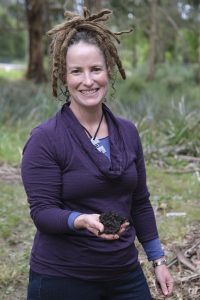
Photo: Suzanne Phoenix
Dr Samantha Grover
Lecturer, Soil scientist, connector, creator; seeking sustainable solutions to social ecological challenges by combining technical innovation with deep stakeholder engagement.
_______________________________________________________________________
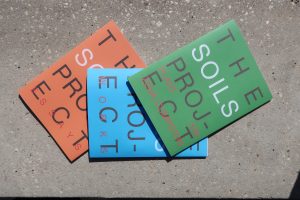
The Soils Project exhibition participants are:
Fellows and Artists
Uncle Dave Wandin (Wurundjeri) and Brooke Wandin (Wurundjeri), Wandoon Estate Aboriginal Corporation; Peta Clancy (Bangerang); Megan Cope (Quandamooka) and Keg de Souza; D Harding (Bidjara, Ghungalu and Garingbal); Badan Kajian Pertanahan (Bunga Siagian & Ismal Muntaha); Beyond Walls (Armando Ello, Jeremy Flohr, Glenda Pattipeilohy, Suzanne Rastovac); Wapke Feenstra; Lian Gogali and the Insitut Mosintuwu; Moelyono; Pluriversity weavers: Seynawiku Izquierdo Torres, Dwasimney Del Carmen Izquierdo Torres, Dwanimako Arroyo Izquierdo, María Eufemia Arroyo Izquierdo (Kwarte Umuke community, Sierra Nevada de Santa Marta, Colombia), Ana Bravo Pérez, Aldo Ramos, Aliki van der Kruijs, LI Yuchen; Riar Rizaldi; Yurni Sadariah (member of PEREMPUAN AMAN of Rangan Adat communities); Diewke van den Heuvel; Rolando Vázquez
Advisors
Wandoon Estate Aboriginal Corporation, Zena Cumpston (Barkandji), Antariksa, Dr Danny Butt, Dr Helen Hughes, Rolando Vázquez
This project has been assisted by the Australian Government through the Australia Council, its arts funding and advisory body; the Sidney Myer Fund; the Dutch Ministry of Foreign Affairs, through the Embassy of Kingdom of the Netherlands, Australia; the Mondriaan Fund, the public cultural funding organisation focusing on visual arts and cultural heritage; Dutch Culture; and Fasilitasi Bidang Kebudayaan (FBK) Interaksi Budaya, Ministry of Education, Culture, Research, and Technology of Indonesia.
Read more
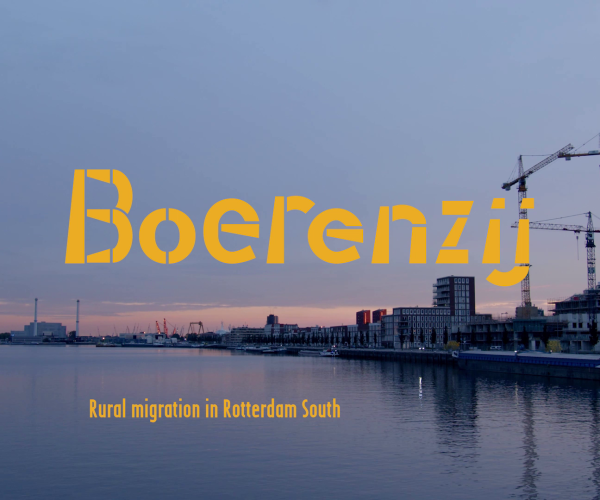

Artist conversation: Wapke Feenstra
Artist Wapke Feenstra’s work in The Soils Project Boerenzij – Rural Migration in Rotterdam South is a film that explores the rural undercurrents of Rotterdam. The project questions the hegemony of urban culture and is a portrait of the city and the neighbourhood where the artist lives and works. She considers how rural culture is […]
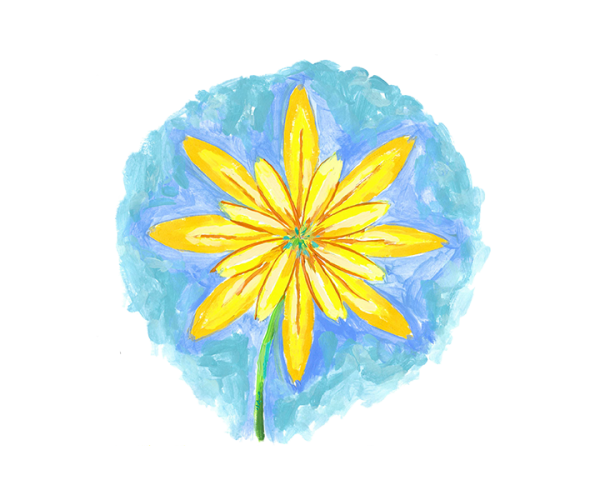

Children’s activity: Draw a murnong
Drawing Upon the Murnong Murrup (murnong spirit) Ballarat based Wadawurrung artist Dr Deanne Gilson has developed this activity! Deanne works primarily with painting, sculptural installation, clay, fabric design and cultural education. Deanne’s art practice depicts native flowers and the importance of plants like the murnong daisy within a First Nations cultural context. The murnong daisy […]
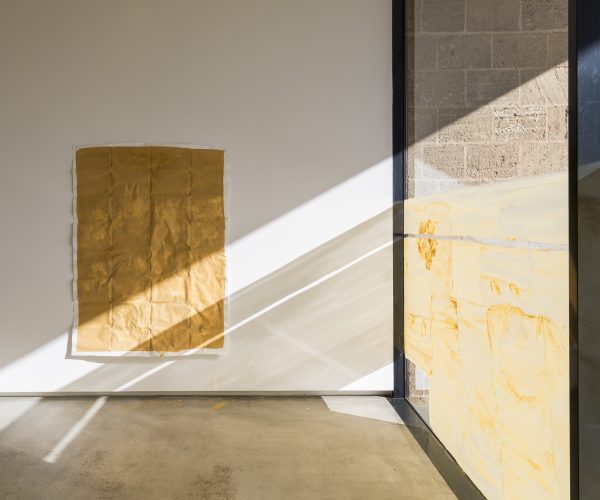

Curatorial conversation: Victoria Lynn on The Soils Project
A curatorial conversation TarraWarra Museum of Art Director, Victoria Lynn speaks about The Soils Project and this particular iteration of an ongoing research-based experimental project developed in collaboration with leading contemporary arts museum the Van Abbemuseum in Eindhoven, the Netherlands and Struggles for Sovereignty, a collective based in Yogyakarta, Indonesia. The Soils Project arises from […]
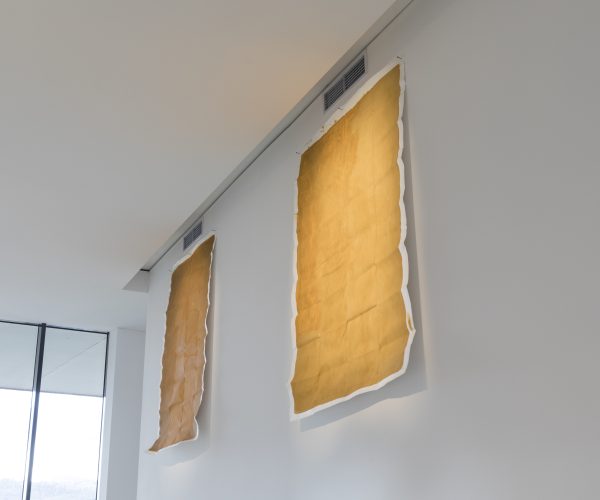

Artist conversation: D Harding
D Harding (Bidjara, Ghungalu and Garingbal) makes artworks from the raw natural materials available to them on Aboriginal territories to shift the experience of a space and reference places of uplift and import. Here they speak about soil in the context of our current exhibition, The Soils Project, and how it can encompass various perspectives, […]
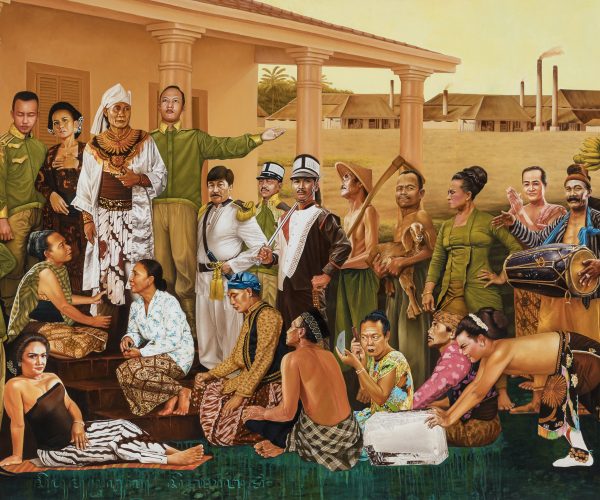

Artist conversation: Moelyono
An artist conversation Moelyono is an artist who is known for his long-term collaborations with communities, the stories and struggles of who he often shares through his works. For The Soils Project he presents two paintings depicting Ludruk, a form of non-hierarchical people’s theatre founded in East Java, which satirises the performers’ everyday lives and […]
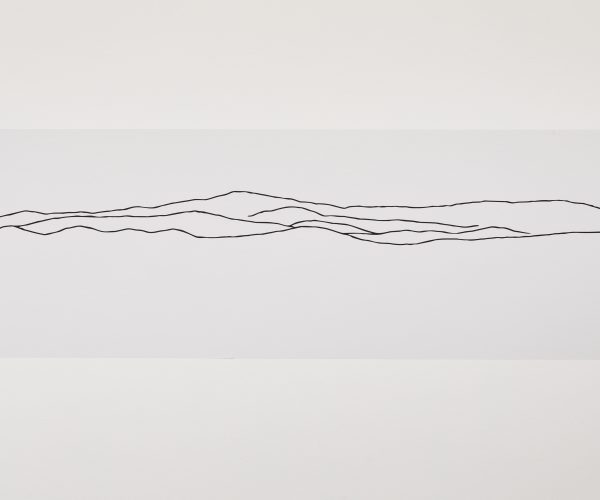

Brooke Wandin talks about The Soils Project on RRR
Listen to Brooke Wandin share about The Soils Project and the many aspects of this complex and meaningful exhibition with connections being at the forefront of her experience. Connections between Country and the body, connections formed with the other First Nations artists involved in the show and recognising the soil as being a point of […]
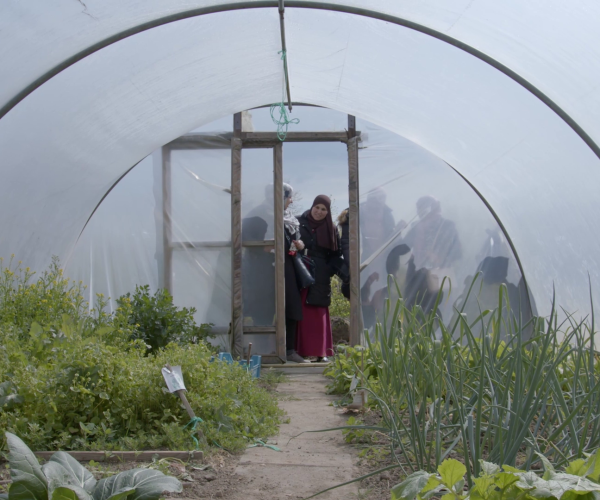

Curatorial conversation: Charles Esche on The Soils Project
A curatorial conversation Director of Van Abbemuseum, the Netherlands, Charles Esche shares interesting insights on how soil is both something that is unique to each of us and also something we share – and why looking into the past to understand the present day is fundamental to creating a better future for all. The Soils […]
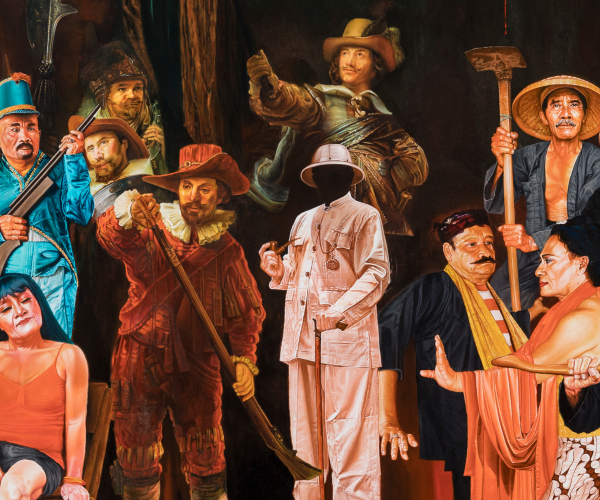

Curatorial conversation: Struggles for Sovereignty on The Soils Project
A curatorial conversation Watch this video with Eliesta Handitya and Gatari Surya Kusuma from activist collective Struggles for Sovereignty based in Yogyakarta, Indonesia. They speak about The Soils Project and in particular the effects of ongoing ecological issues and their work of bringing diverse communities together to address the complexities of deforestation, extraction and justice […]